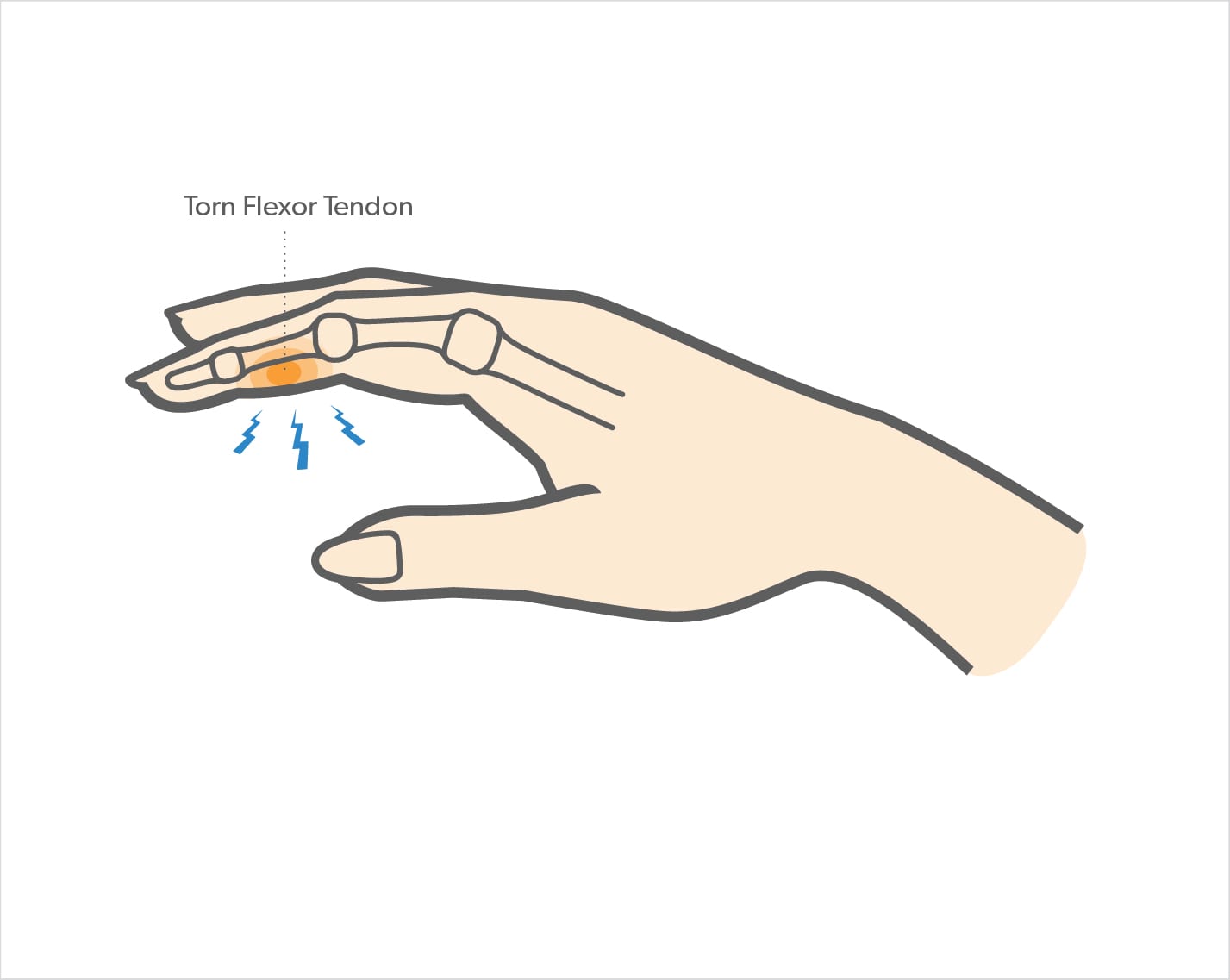Jersey finger is a type of injury to the flexor tendons, common among athletes who play contact sports. Flexor tendons, long fibrous cords, connect the forearm muscles to the bones in the fingers. When your muscles contract, these tendons act as a pulley allowing your fingers to bend. Jersey finger is a potentially serious injury that occurs when the flexor tendon at the tip of the finger is torn or pulled away from the bone in the tip of the finger (the distal phalanx). The condition is painful and limits your ability to bend your finger.
Jersey Finger Causes, Symptoms & Treatment Options
Jersey finger is a type of injury to the flexor tendons, common among athletes who play contact sports. Flexor tendons, long fibrous cords, connect the forearm muscles to the bones in the fingers. When your muscles contract, these tendons act as a pulley allowing your fingers to bend. Jersey finger is a potentially serious injury that occurs when the flexor tendon at the tip of the finger is torn or pulled away from the bone in the tip of the finger (the distal phalanx).
Overview
Overview

What causes Jersey Finger?
This injury is called “jersey finger” because it commonly occurs during contact sports when a player grabs an opponent’s jersey. When the opponent forces the jersey away, the player’s tendon gets torn. It is most common in these sports:
• Football
• Rugby
• Hockey
• Martial arts
Symptoms
Athletes with jersey finger can’t straighten the injured finger. Other common symptoms include:
• Pain in the fingertip
• Tenderness
• Swelling
• Bruising
When to see a doctor
Jersey fingers often go undiagnosed initially, since the athlete may think that his or her swelling and inability to bend the fingertip is simply due to a fingertip sprain. But if you have symptoms of a jersey finger, you should see your doctor. If surgery is needed, it should be performed within approximately ten days of the injury to ensure a good recovery. Physical examination is usually sufficient to diagnose a jersey finger. Your doctor may order x-rays or other imaging test to confirm the diagnosis and determine if there is also a fractured fingertip.
Non-operative treatment
Your doctor may initially place your hand in a splint to minimize any further damage. Typically, surgery is the recommended treatment for jersey finger to regain movement of the fingertip, particularly if the tendon is torn or ruptured. If you only have a partial tear and surgery is not needed, an exercise program will be important to achieving a full recovery.
Try these exercises to help address your condition:
Below is a PDF of the exercise program.
Surgical Treatment
Surgery is usually conducted on an outpatient basis, and involves making an incision over the finger, locating the flexor tendon, and re-attaching it to the distal phalanx. If there is an avulsion fragment, where the tendon has pulled off a piece of bone, the fragment can be re-attached to the bone with screws. If if is small enough, it could also be removed.
Recovery
Full recovery after surgery for jersey finger can take at least three months. A splint may be worn for much of this time for protection while your hand heals. Your doctor can recommend specific exercises that will aid in your recovery and get you back to play.

